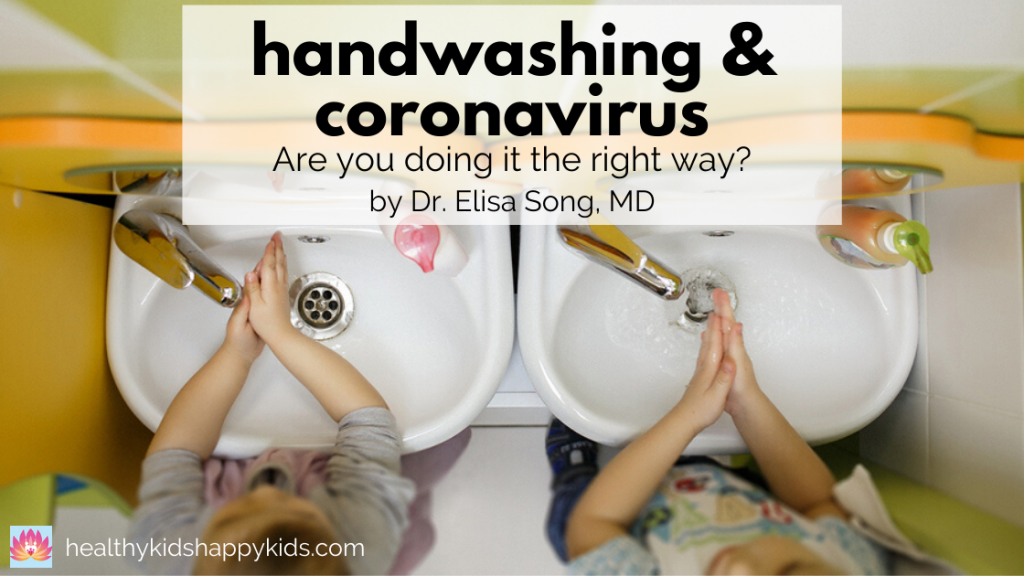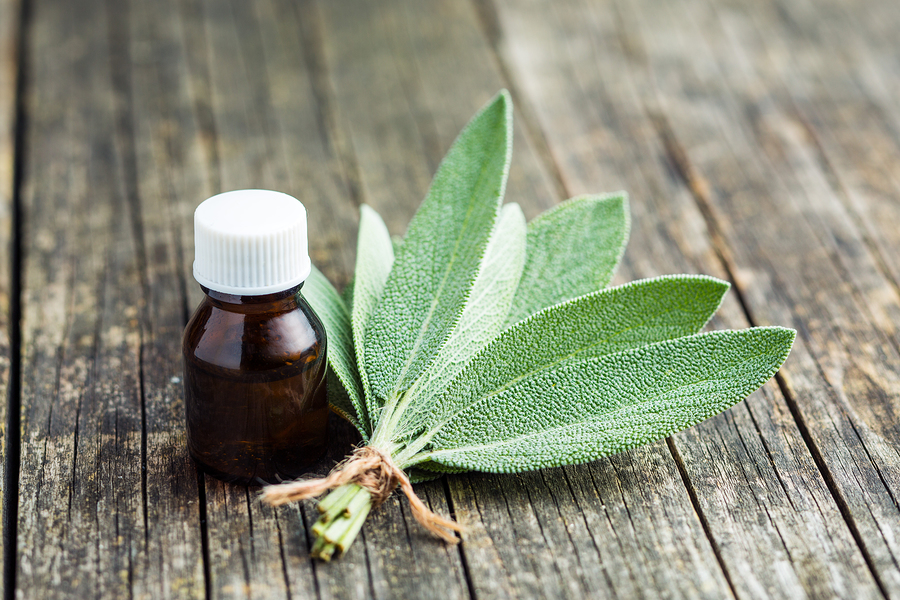Handwashing and Coronavirus: Are you doing it the right way?

How much does handwashing really help to prevent the spread of Coronavirus? Let’s find out!
Did you know that 30% of people DON’T wash their hands after going to the bathroom? EEEEUUUUWWW!
And of those who do wash their hands, only about 50% do it RIGHT? Many are simply wetting their hands quickly, with or without soap.
Statisticians who looked at how much proper handwashing could actually make a difference in spreading infectious disease calculate that:
If 60% rather than 20% of air travelers maintained clean hands, it could slow down the spread of infections by almost 70% (1)
SEVENTY PERCENT!
Even just increasing the number of people with clean hands by 10% could decrease the rate of disease transmission by 24%!
Handwashing REALLY is one of the best ways to prevent global pandemics!
What should you wash your hands with?
Plain old soap and water for the win!
One study (2) found that about 44% of people who deliberately touched door handles and railings in public places had bacterial contamination of their hands (yes – think about the escalator or stair rails that your kids love sliding their hands all over). After handwashing with water alone, this percentage dropped to 23%, and after handwashing with water and plain soap, this percentage dropped even lower to 8%. And it didn’t matter which bacteria was found on the hands – washing lowered them all!
Another small hospital-based study (3) found that washing hands under running water, even without soap, was more effective than ethanol-based hand disinfectants at killing the Influenza A virus! In fact, ethanol-based disinfectants were found to be extremely ineffective against Influenza A because ethanol can’t penetrate the mucus surrounding the influenza virus. In this study, Influenza A was still living after 2 minutes of rubbing hands with an ethanol-based disinfectant. You’d have to rub your hands for 4 minutes to completely inactivate Influenza A (that’s singing your ABCs 8 times! P.S. It takes about 30 seconds for most people to get through 1 round of ABCs). If you wait for the mucus to completely dry on your fingers, then ethanol-based disinfectants can work within 30 seconds. But it takes 30 minutes for mucus to completely dry. So, uh, if you have someone’s snot or phlegm on your hands (sorry to be gross, but that’s what it is!), are you really going to wait 30 minutes until it’s completely dry before you clean your hands??? On the other hand, washing hands with running water inactivated Influenza A within 30 SECONDS! The same results were found whether you used plain water only, or water with plain or antiseptic soap.
Rubbing under running water mechanically removes viruses and bacteria before you can touch your face and inoculate yourself through your eyes, nose and mouth. Did you know that people touch their faces up to 23+ times an hour? And that 44% of the time, people make contact with their mucous membranes (eyes, nose, mouth) – exactly the point of entry for influenza or coronavirus! (5) Instead of nagging your kids constantly to STOP TOUCHING their faces, start with having them be mindful and notice when they ARE touching their face. Frame what they should be doing in a positive way instead of negative. Positive reinforcement always works better than negative reinforcement. Instead of “STOP touching your face”, try “KEEP your hands down.”
Want even more reason to use WATER over antibacterial soaps and hand sanitizers. Antibacterial disinfectants disrupt our skin microbiome and have been found to increase the risk of creating antibiotic-resistant superbugs! In fact, the FDA already banned Triclosan and 23 other ingredients in over-the-counter antiseptic products back in 2017 due to concerns of growing antibiotic-resistance and possible thyroid suppression.
But water and soap alone aren’t enough. Hands need to be washed in the right way to provide antimicrobial benefit and prevent spread of infection.
Do you know how to wash your hands the RIGHT way?
Remember that of the 70% of people who actually wash their hands, only 50% do it the right way, which means only about 35% of people who are actually washing their hands well enough to prevent viral transmission. SO, here’s a refresher on how to do it the RIGHT way.
6 Steps to Wash Your Hands the Right Way (6):
- Step 1: Wet hands with clean, running water (warm or cold), turn off tap and apply soap
- Step 2: Lather hands by rubbing them together with soap. Lather the BACKS of your hands, BETWEEN your fingers, and UNDER your nails.
- Step 3: Scrub hands for at least 20 seconds (I recommend 30 seconds or 1 round of the ABC song).
- Step 4: Rinse your hands well under clean, running water.
- Step 5: Dry your hands using a clean towel or air dry them.
- Steo 6: Turn off faucet with your elbows, wrists, or paper towel, not your freshly-cleaned hands!
To help your kids understand and visualize how to do each step and wash their hands the right way, watch the following CDC videos together. You might also learn a tip or two:
According to the CDC, you should wash your hands:
- Before, during, and after preparing food
- Before eating food
- Before and after caring for someone at home who is sick with vomiting or diarrhea
- Before and after treating a cut or wound
- After using the toilet
- After changing diapers or cleaning up a child who has used the toilet
- After blowing your nose, coughing, or sneezing
- After touching an animal, animal feed, or animal waste
- After handling pet food or pet treats
- After touching garbage
- Basically – OFTEN…
What if you don’t have soap and water?
If you don’t have access to running water and soap, the CDC recommends using an alcohol-based hand sanitizer with at least 60% alcohol, like Purell which is 70% ethanol. Why alcohol? A review of 22 studies (7) found that a disinfectant solution with 62-71% ethanol could effectively and quickly kill coronaviruses like SARS-coV and MERS-CoV – previous coronavirus strains responsible for the SARS and MERS worldwide epidemics.
THE PROBLEM: Purell is sold out everywhere!
THE SOLUTION: You could make your own…
USA Today even has an entire article (8) dedicated to making your own alcohol-based hand sanitizer. The easiest recipe they shared was from ThoughtCo (9):
Pour the following ingredients into a hand sanitizer or recycled liquid soap bottle and shake:
- 2/3 cup 99% rubbing alcohol (isopropyl alcohol) or ethanol
- 1/3 cup aloe vera gel
- 8-10 drops essential oil, optional (such as lavender, vanilla, peppermint, grapefruit)
For more information on how to make an effective Coronavirus-fighting hand sanitizer, be sure to read my article: How to Make a 60% Alcohol-based Hand Sanitizer!
Can essential oils kill coronavirus?

So what about essential oils? I know there are many recipes calling for essential oil-based hand sanitizers to help combat coronavirus. Unfortunately, I can’t say that these will be effective. Many essential oils have been found to have antimicrobial properties in various studies (10), including tea tree, lavender, thyme, peppermint, clove, eucalyptus, sage.
But the ONLY essential oil in studies that has been found to be effective against coronavirus, specifically SARS-CoV, is…
Salvia officinalis, or Sage essential oil
We don’t know whether sage essential oil is effective against the current 2019 novel Coronavirus, SARS-CoV-2.
So what am I going to do? I’ll still be using a >60% alcohol-based hand sanitizer, but I’ll be sure to add some sage and other antimicrobial essential oils because … why not?
PLEASE: remember to rub your hands vigorously after applying your alcohol-based hand sanitizer for at least 30 seconds, making sure you get your palms, back of hands, between fingers, and under fingernails – just like you would if you were washing with soap and water!
While coronavirus looks like it’s here and on the rise, do what you can to protect yourself and others from further spread. Keep those hands down away from your face. Wash your hands frequently with soap and water. And if you don’t have that, rub your hands vigorously with an alcohol-based hand sanitizer and your favorite choice of antimicrobial essential oils!
And stay even more CALM and PREPARED with my comprehensive article, Coronavirus (COVID-19): What a Pediatrician Wants You to Know.
If you found this useful, please be sure to share with anyone you know who could benefit.
xo Holistic mama doc – Elisa Song, MD
References:
- https://onlinelibrary.wiley.com/doi/full/10.1111/risa.13438
- https://www.ncbi.nlm.nih.gov/pubmed/21318017
- https://msphere.asm.org/content/4/5/e00474-19
- https://www.cdc.gov/handwashing/when-how-handwashing.html
- https://www.ajicjournal.org/article/S0196-6553(14)01281-4/fulltext
- https://www.cdc.gov/handwashing/when-how-handwashing.html
- https://www.journalofhospitalinfection.com/article/S0195-6701(20)30046-3/fulltext
- https://www.usatoday.com/story/money/2020/03/04/hand-sanitizer-recipe-purell-shortage-2020-coronavirus-prevention/4947807002/
- https://www.thoughtco.com/make-your-own-homemade-hand-sanitizer-606145
- https://www.ncbi.nlm.nih.gov/pmc/articles/PMC6612361/